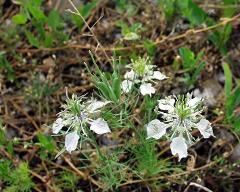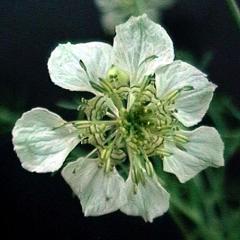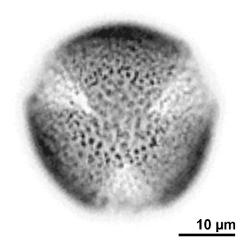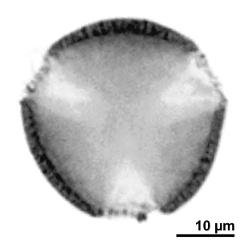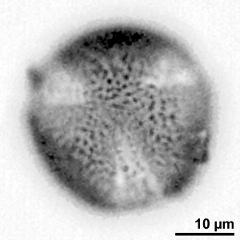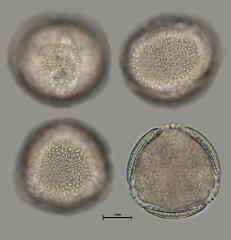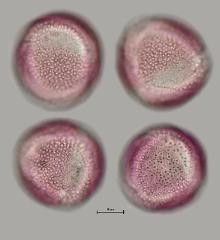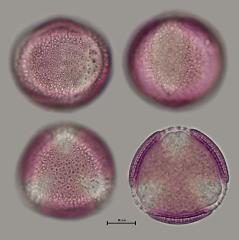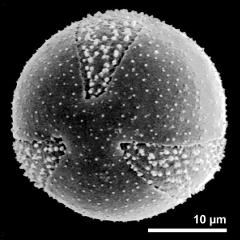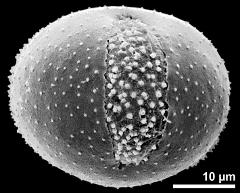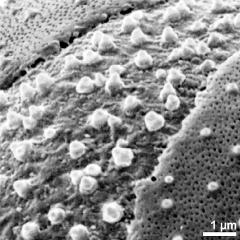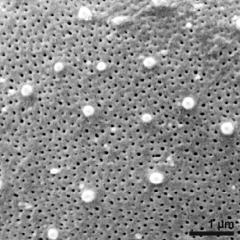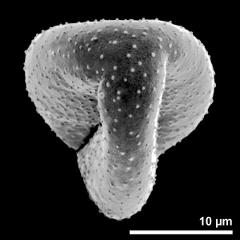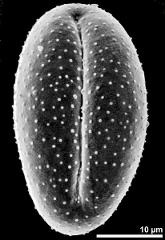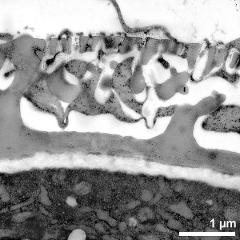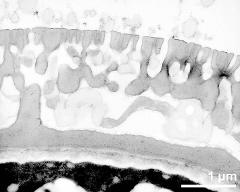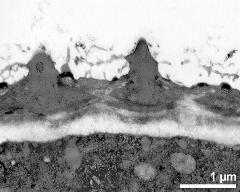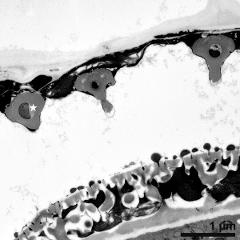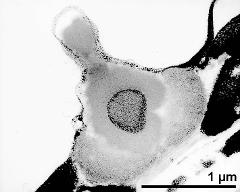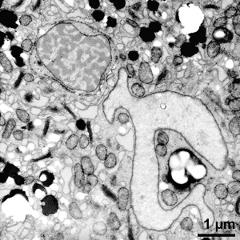Nigella arvensis
Taxonomy: Angiospermae, Ranunculales, Ranunculaceae, Nigella
Links: https://flora.nhm-wien.ac.at/Seiten-Arten/Nigella-arvensis.htm
Published: 2021-06-23
Pollen Description
Shape, Size and Aperture
pollen unit: monad, dispersal unit and peculiarities: monad, size (pollen unit): medium-sized (26-50 µm), size of hydrated pollen (LM): 26-30 µm, 31-35 µm, shortest polar axis in equatorial view (LM): 26-30 µm, longest polar axis in equatorial view (LM): -, shortest diameter in equatorial or polar view (LM): 31-35 µm, longest diameter in equatorial or polar view (LM): 31-35 µm, pollen class: colpate, polarity: isopolar, P/E-ratio: -, shape: spheroidal, outline in polar view: circular, dominant orientation (LM): oblique, P/E-ratio (dry pollen): prolate, shape (dry pollen): -, outline in polar view (dry pollen): lobate, infoldings (dry pollen): aperture(s) sunken, aperture number: 3, aperture type: colpus, aperture condition: colpate, tricolpate, aperture peculiarities: aperture membrane ornamented
Ornamentation and Structure
LM ornamentation LM: verrucate, scabrate, gemmate, nexine: -, sexine: -, SEM ornamentation SEM: microechinate, perforate, suprasculpture SEM: -, TEM tectum: eutectate, infratectum: columellate, foot layer: continuous, endexine: compact-continuous, intine: monolayered, wall peculiarities: internal tectum, supratectal element: -
Miscellaneous
pollen coatings: pollenkitt, reserves in cytoplasm: starch, lipids, cell number: 2-celled, Ubisch bodies: present
Author(s) of diagnosis: Oberschneider, Wolfgang; Weber, Martina; Auer, Waltraud
Pictures
Picture legend
- flower(s), photographer: Halbritter, H.
- flower(s), photographer: Oberschneider, W.
- upper focus - fresh, acetolyzed, unstained, photographer: Oberschneider, W.
- optical section - fresh, acetolyzed, unstained, photographer: Oberschneider, W.
- lower focus - fresh, acetolyzed, unstained, photographer: Oberschneider, W.
- hydrated Pollen - fresh, glycerine, unstained, photographer: Auer, W.
- hydrated Pollen - fresh, glycerine, ruthenium red, photographer: Auer, W.
- hydrated Pollen - fresh, glycerine, ruthenium red, photographer: Auer, W.
- polar view - fresh, rehydration (water) & chloroform & critical point dried & sputter coated with gold, photographer: Oberschneider, W.
- equatorial view - fresh, rehydration (water) & chloroform & critical point dried & sputter coated with gold, photographer: Oberschneider, W.
- detail of aperture - fresh, rehydration (water) & chloroform & critical point dried & sputter coated with gold, photographer: Oberschneider, W.
- exine surface - fresh, rehydration (water) & chloroform & critical point dried & sputter coated with gold, photographer: Oberschneider, W.
- polar view of dry pollen grain - dry, sputter coated with gold, photographer: Oberschneider, W.
- dry pollen grain in equatorial view - dry, sputter coated with gold, photographer: Oberschneider, W.
- interapertural area of pollen wall - fresh, glutaraldehyde & osmium, uranyl acetate & lead citrate, photographer: Oberschneider, W.
- pollen wall - fresh, glutaraldehyde & osmium & potassium ferrocyanide, uranyl acetate & lead citrate, photographer: Weber, M.
- aperture - fresh, glutaraldehyde & osmium, uranyl acetate & lead citrate, photographer: Oberschneider, W.
- Ubisch bodies (top) - fresh, glutaraldehyde & osmium, modified Thiéry-test, photographer: Oberschneider, W.
- Ubisch body - fresh, glutaraldehyde & osmium, lipid-test, photographer: Weber, M.
- generative cell (top) and vegetative nucleus - fresh, glutaraldehyde & osmium, modified Thiéry-test, photographer: Oberschneider, W.
Literature
- (1973) Development of tapetal membrane and Ubisch-granules in Nigella damascena - a histochemical approach. Beitr Biol Pflanzen 49: 59-72
- (1976) Ontogeny, cytology, and histochemistry of anther tapetum in relation to pollen development in Nigella damascena. Phytomorphology 26: 46-59
- (1998) Pollenmorphologie der Ranunculanae. Diplomarbeit. Universität Wien : 125 pp
- (1979) The morphology of the exine in Nigella (Ranunculaceae). Amer J Bot 66: 162-165
- (1969) Studies in the family Ranunculaceae-microsporangium, microsporogenesis and ubisch granules in Nigella damascena. Phyton 13: 203-209
- (1993) Struktur, Antheseverlauf und Bestäubung der Blüte von Nigella arvensis (Ranunculaceae). Verh Zool Bot Ges Österreich 130: 99-125
- (1994) Exkursionsflora von Österreich : 1180
- (1998) Preparing living pollen material for scanning electron microscopy using 2,2-dimethoxypropane (DMP) and criticalpoint drying. Biotechnic Histochem 73: 137–143
Copyright and Citation
Cite this publication as:
Oberschneider W., Weber M., Auer W., Halbritter H. 2021. Nigella arvensis. In: PalDat - A palynological database. https://www.paldat.org/pub/Nigella_arvensis/306289;jsessionid=65F118DA4DDB4323C9E68D150A8EC6B5; accessed 2024-04-25

